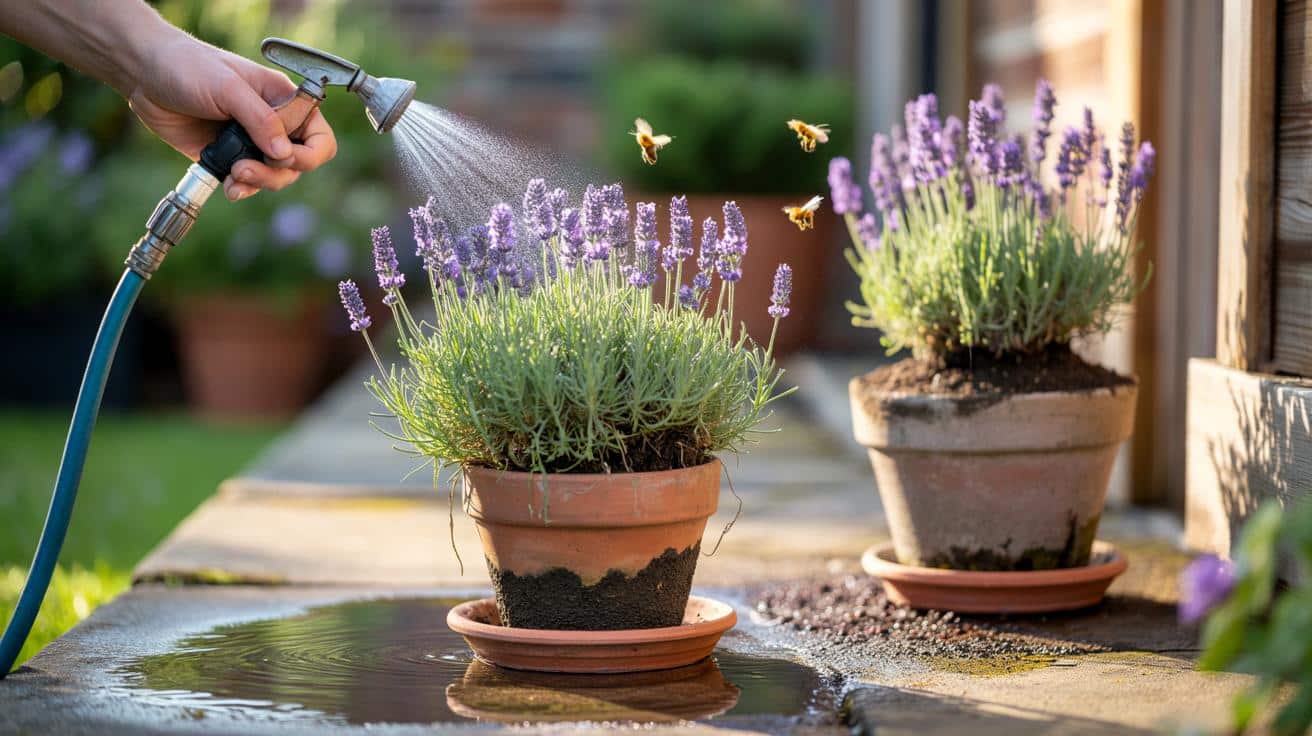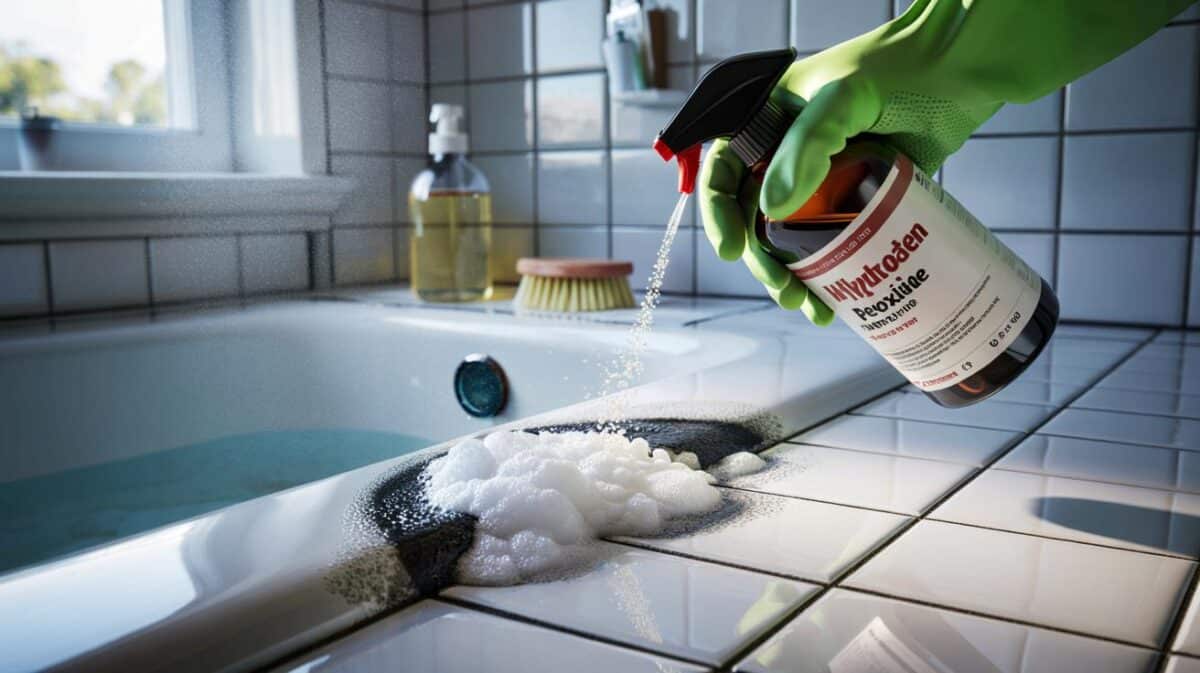Across the UK, one much‑loved shrub is drowning in kindness, and the damage often shows too late. If your lavender looks tired, the watering can is not the hero of this story.
The morning I realised, the neighbourhood was still half-asleep and the air smelled faintly of mint tea and warm paving. A neighbour stood over a leggy lavender with a hose, murmuring comfort as if the right words would perk it up, water shining on the silvery leaves like sequins. I watched the stems bend, not bounce, and heard that little inner voice that gardens whisper when you stop long enough to listen: put the hose down, walk away. The fix was to stop.
Lavender doesn’t want your water
Lavender is a Mediterranean shrub built for sun and stingy skies, happiest with hot roots and a breeze across the crown. Its leaves are tiny to conserve moisture, its roots hunt sideways for air, and its oil-filled stems resent soggy feet. Overwatering swamps the pore spaces in soil, squeezes out oxygen, and invites the quiet killers: rot and fungi. If you’re watering your lavender weekly, you may already be killing it.
Here’s a snapshot from a front garden in Kent last July: two pots of lavender on a warm step, bees frenzied, one plant drooping for days. The owner watered morning and night, convinced thirst was the problem, and within a week the centre turned brown, the base went black, and the pot smelled like a wet cupboard. We’ve all had that moment when a beloved plant suddenly sulks, and your first impulse is to fetch the watering can.
What’s really happening is simple plant physics. Roots need air as much as moisture, and when water parks in the pot, oxygen can’t get in, so roots die back and the plant starves. In that weakened state, soil-borne pathogens move in, and a light summer sprinkle becomes a winter death sentence. Excess water also softens fresh growth late in the season, so frost bites deeper and the woody frame never hardens. Stop watering it, and watch it breathe again.
What to do instead
Switch to the knuckle test and the lift test, and keep it boringly strict. Press a finger to knuckle depth near the root zone; if it feels cool but not damp, skip the water, and if the pot feels pleasantly light when lifted, wait another day or three. Water only at planting, during the first dry fortnight while roots wake up, and during genuine heatwaves when the top 5 cm is bone-dry. Aim at the base, not the foliage, and add pot feet plus a 50:50 mix of coarse grit and peat-free compost to keep the roots airy.
Common slip-ups look small but matter: saucers that collect a permanent puddle, bark mulch that clings to the crown, automatic irrigation set “just in case”, and kind evening spritzes that never reach the roots. If you grow in clay, raise the bed or use a terracotta pot with generous drainage holes and a layer of crock at the bottom. Let’s be honest: no one actually does that every day. Build little habits you’ll keep on a busy Tuesday, not just on a sunny bank holiday.
Think like a lavender and life gets calmer: bright light, lean soil, moving air, and a dry crown, especially from August onwards so the plant can toughen before winter. Trim lightly after flowering to keep a tight cushion, but avoid cutting into old wood, and resist the urge to “revive” a tired plant with water. Lavender thrives on neglect.
“Most lavenders die from wet feet, not drought. If your instinct is to water, wait 48 hours and check the soil again,” says Sarah Pike, a Devon grower who raises thousands each year.
- Use grit-rich, peat-free compost for pots and raised planters.
- Space plants so air moves; don’t let foliage touch damp mulch.
- Remove saucers in autumn; keep crowns high and dry.
- Water only when the top 5 cm is bone-dry, then water once, deeply, and stop.
Think beyond the watering can
Stopping the water is really about changing the story you tell yourself in the garden. Lavender is your reminder that doing less can be an act of care, and that a smart gardener reads the plant, not the calendar. Share cuttings with a neighbour, set a shallow bee saucer nearby, and watch how a dry, sunlit cushion hums with life while a soggy one slumps. When in doubt, don’t water. This is the kind of restraint that builds confidence over time, and it spills into other plants that prefer tough love: rosemary, santolina, cistus, even young olive trees in a warm corner. Your garden starts to feel lighter, simpler, and oddly more alive when you stop playing firefighter and start listening to the weather.
| Point clé | Détail | Intérêt pour le lecteur |
|---|---|---|
| Stop routine watering | Lavender prefers dry roots and air in the soil | Prevents root rot and winter losses |
| Improve drainage | Grit-rich mix, pot feet, raised beds, no saucers | Fewer fungal problems, tighter growth, better scent |
| Water only on need | Knuckle test and lift test during heatwaves | Simple rule you can stick to all year |
FAQ :
- Which plant should I stop watering right now?Lavender (Lavandula spp.) once established. It’s adapted to dry, free-draining conditions and suffers when kept wet.
- How often should I water a new lavender?Only during the first few weeks and only when the top 5 cm of soil is dry. After that, water during genuine heatwaves, not by schedule.
- What are the signs of overwatered lavender?Drooping despite damp soil, blackening at the base, browning from the centre out, and a musty smell in the pot or bed.
- Can lavender grow in heavy clay?Yes, if you lift it: use raised beds or large terracotta pots, add lots of coarse grit, and keep the crown above surrounding soil.
- Should I water lavender in winter?No. Keep it dry, remove saucers, improve airflow, and let the plant harden. Winter wet is far riskier than winter cold for lavender.









